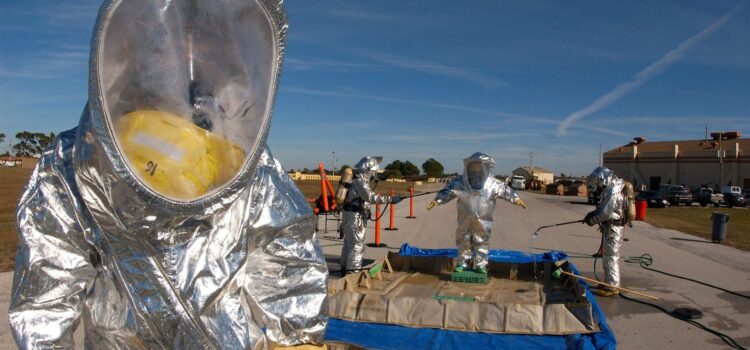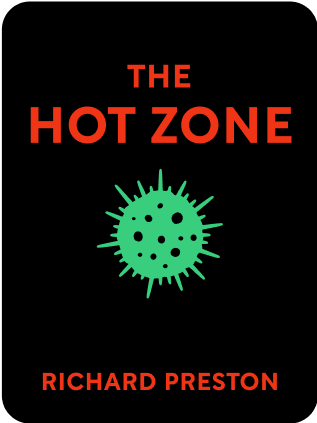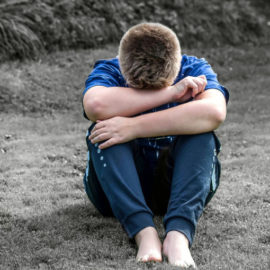

This article is an excerpt from the Shortform summary of "The Hot Zone" by Richard Preston. Shortform has the world's best summaries of books you should be reading.
Like this article? Sign up for a free trial here .
How do you stop Ebola from spreading? Are there Ebola decontamination procedures in place?
Ebola decontamination is a process in which teams work to get rid of Ebola viruses and germs to stop the spread of infection. This was an important process for stopping the spread of Ebola during several outbreaks.
Keep reading to find out how Ebola decontamination works, and how it helps stop an outbreak.
Ebola Sanitization at the Monkey House
Within a few days, the media had caught wind of the viral outbreak at Reston. On the morning of the Army’s first Ebola decontamination operation at Reston, the front-page story in The Washington Post was about the discovery of Ebola in the monkey house.
Peters had given the reporter a quote for the story, speaking carefully to avoid raising panic and to assure the public that everything was under control. The Army had to act as cautiously and inconspicuously as possible during its mission to avoid making a scene at the Reston facility, while also figuring out the answer to the question “how do you stop Ebola from spreading?”
As Jerry Jaax and his team prepared to enter the monkey house that morning, no one wore uniforms, and they wouldn’t change into their biohazard space suits until they were in a designated staging area inside the building. To onlookers, it appeared to be a benign operation—rather than the serious biohazard mission it was.
Even Dalgard was surprised by the Army’s space suits—he’d been handling infected monkey corpses for weeks with much less protection, and he felt fine. Wearing only a respirator, Dalgard led several Army officials into the monkey room, and he picked out the four sickest-looking monkeys to be studied.
The monkeys were euthanized and then Nancy Jaax took them back to USAMRIID for dissection. This time, she found clear signs of Ebola, including:
- Sloughed-off intestinal lining
- Intestinal muscles clogged with blood clots
- Uncoagulated blood filling the intestine
As the day went on, Jerry Jaax and his team euthanized the remaining 65 monkeys in the room, collecting samples of each monkey’s blood, liver, and spleen.
A Second Monkey House Worker Gets Sick
Three days after the monkey room Ebola sanitization, a second worker at the monkey house got sick. The monkey caretaker, identified as Milton Frantig, vomited, had a fever of 101 degrees, and became weak.
With two of the facility’s four employees sick, Dalgard grew more worried about the seriousness of the situation. He immediately drove to his company’s headquarters to make the case for evacuating and shutting down the Reston facility, and then turning the building over to officials at USAMRIID. The general manager agreed.
Dalgard told Peters and Russell that Hazleton would let the Army take over the monkey house for full Ebola sanitization. They drew up an agreement, and the Reston facility was officially under the Army’s charge.
Biohazard SWAT Team Moves In for Ebola Decontamination
Jerry Jaax and his team would need to go back into the monkey house to deal with the hundreds of animals that were still in the remaining rooms. He made sure that everyone on his team was willing to participate in the mission, and he instructed team members to say nothing to anyone about the operation. Taking on the entire facility would be the first major biohazard mission in the world.
Johnson and Jaax planned the logistics of the operation. The biohazard SWAT team would systematically work through one monkey room at a time, dealing with each monkey in five steps:
- Making the monkey unconscious with injections of a general anesthetic and a sedative
- Taking a blood sample from the unconscious monkey
- Euthanizing the monkey
- Collecting samples of the monkey’s liver and spleen
- Bagging the corpse and placing the bags in biohazard containers
The group was split into subteams to perform the various tasks.
They set up the different areas they’d need to carry out the mission safely, including:
- A bleed area, where a bleed team would collect blood samples. The bleed area had a drain in the floor where they could rinse blood, then they’d chase it with bleach to prevent the virus from getting into the sewage system.
- A staging area, where a support team helped soldiers put on their field biological suits. This area was inside the building so that passersby wouldn’t be alarmed by the space suits.
- A gray zone, where soldiers entered the building and decontaminated themselves on their way out. They used a cinder-block corridor, which served as the perfect buffer zone between the hot zone and the staging area.
As Jerry Jaax and his team worked through the monkey house, he noticed that many of the sick monkeys were coughing, sneezing, and had running noses. It appeared that the virus was a mutated form of the Ebola virus that was airborne and flu-like.
Ebola Decontamination
After a few long, exhausting days, the Army finished euthanizing all 450 monkeys in the Reston facility. They had collected 3,500 samples for research.
Now it was time for the Ebola decontamination team to sterilize the building. The decon team scrubbed every inch of every surface with bleach, and they finished by gassing the building with formaldehyde. As standard practice, they placed swatches throughout the building that contained the spores of a harmless bacteria that are very difficult to kill; if the bacteria was dead by the end of the gassing, it’d indicate that the virus was also dead.
By the end of three days of gassing, the bacteria spores were dead. The decon team assumed the facility was clean and safe—but, as with any Ebola decontamination mission, there was no way to know for sure the answer to the question “how do you stop Ebola from spreading?”

———End of Preview———
Like what you just read? Read the rest of the world's best summary of Richard Preston's "The Hot Zone" at Shortform .
Here's what you'll find in our full The Hot Zone summary :
- The many different strains of Ebola, including the deadliest kind with a kill rate of 90%
- How scientists unraveled the mystery of a new strain of Ebola
- How Ebola could become airborne, becoming one of the deadliest viruses known






